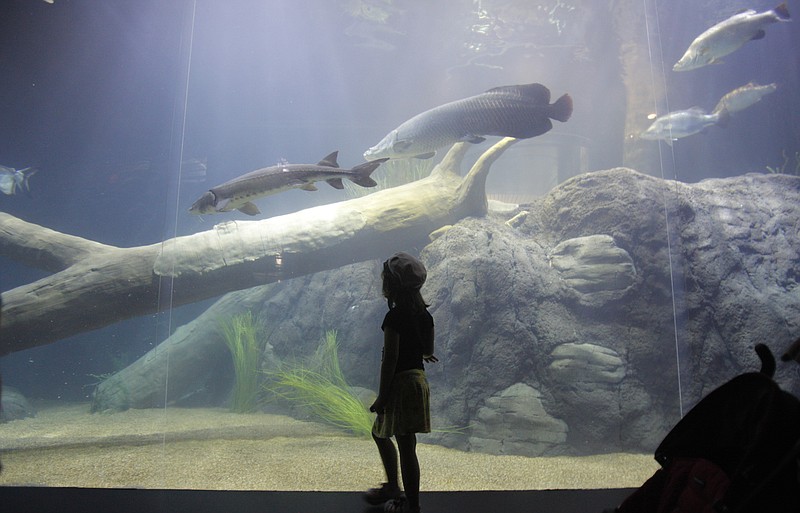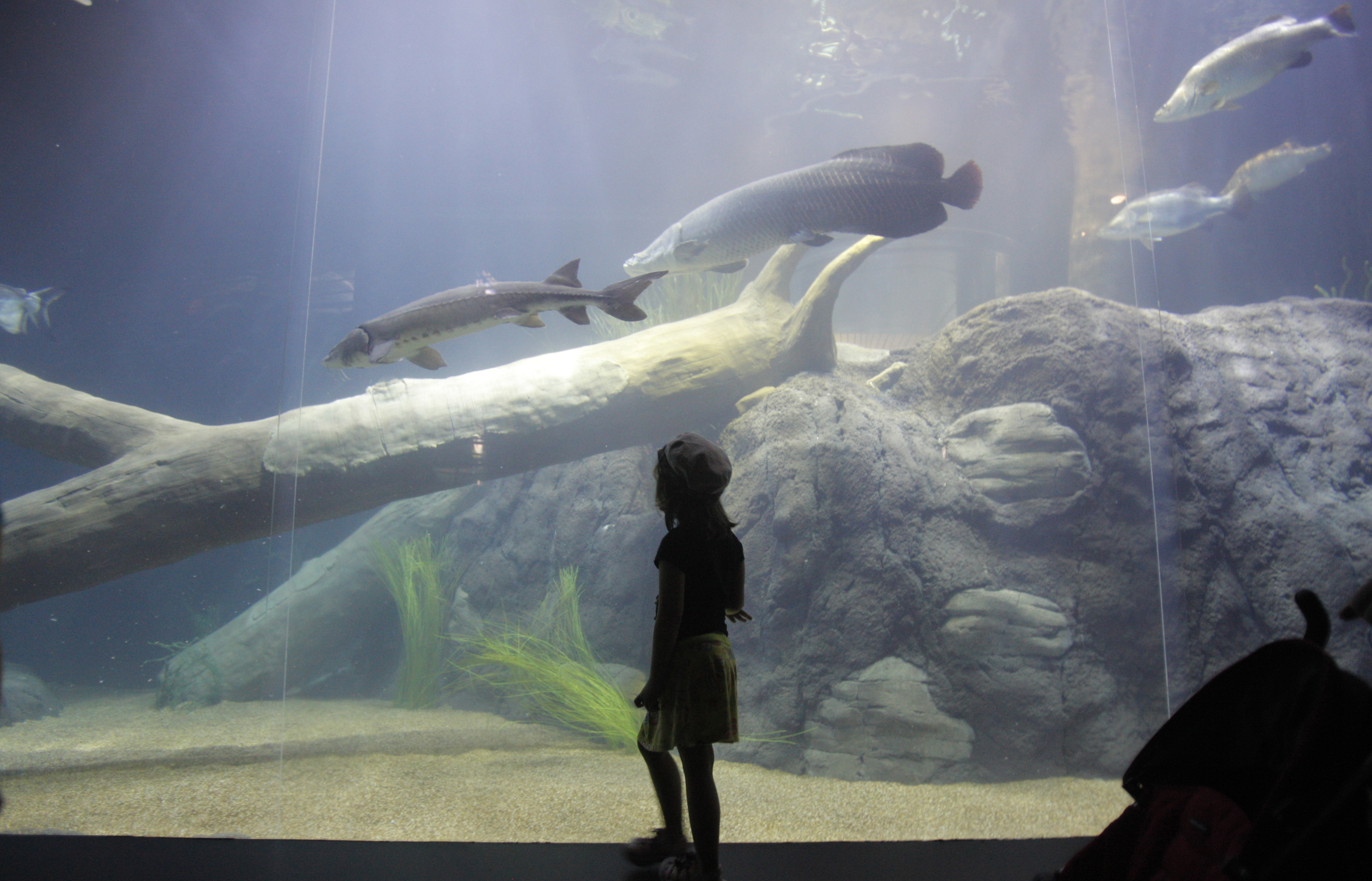Flashbulbs cut through the darkness deep within the Tennessee Aquarium where children gawk at stingrays bigger than they are.
The fish come from around the globe, from the giant pangassius of Southeast Asia to alligator gars of the American South. Some are endangered. Most are apex predators. All are enormous.
The River Giants exhibit, opening on the aquarium's 20th anniversary, is the result of years of work from the aquarium and National Geographic personality Zeb Hogan of the show "Monster Fish." The fish came to the aquarium through a variety of channels - the arapaima were confiscated by U.S. customs agents and Buzz the catfish originally was owned by a home aquarist who had to abandon him once the fish grew several feet.
Curator of Fish Thom Demas remembers seeing the arapaima for the first time in 2002, laughing and saying that they would have fit in hot dog buns. Now they're each roughly 6 feet long, and they're still growing.
"When the aquarium received [the pangassius], they were only a few inches long," Hogan said, "They're almost never found in the wild. I have a strong connection with them."
Hogan has been at the exhibit in the past week to share his research on freshwater fish like the pangassius and encourage aquarium visitors to help conserve their populations.
The exhibit coincides with the aquarium's efforts to repopulate the Tennessee River with a local giant - the lake sturgeon, which has been disappearing from the region in recent years. Aquarium scientists already have released over 100,000 of the fish in the area and continue to breed sturgeons bound for the wild.
Though most of the river giants on display were raised on site, the aquarium paid about $50,000 to import a trio of giant whiptail rays from Australia.
Now veterinarians are hard at work making sure the large and growing predatory fish cohabitate peacefully. That means feeding them lots of clams, squid and smelt so they won't turn on each other, while also monitoring the fish to ensure that they don't eat so much as to risk obesity and heart disease.
They'll also just need to get used to each other.
"I think it does help that they're relatively the same size," Hogan says, "As they all grow together, they'll learn how to get along together."

